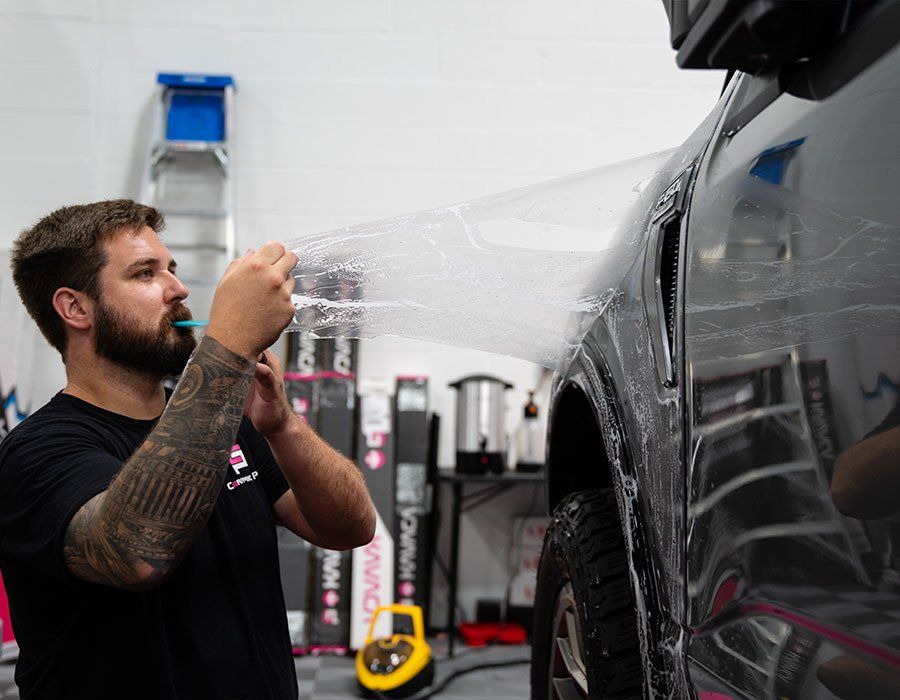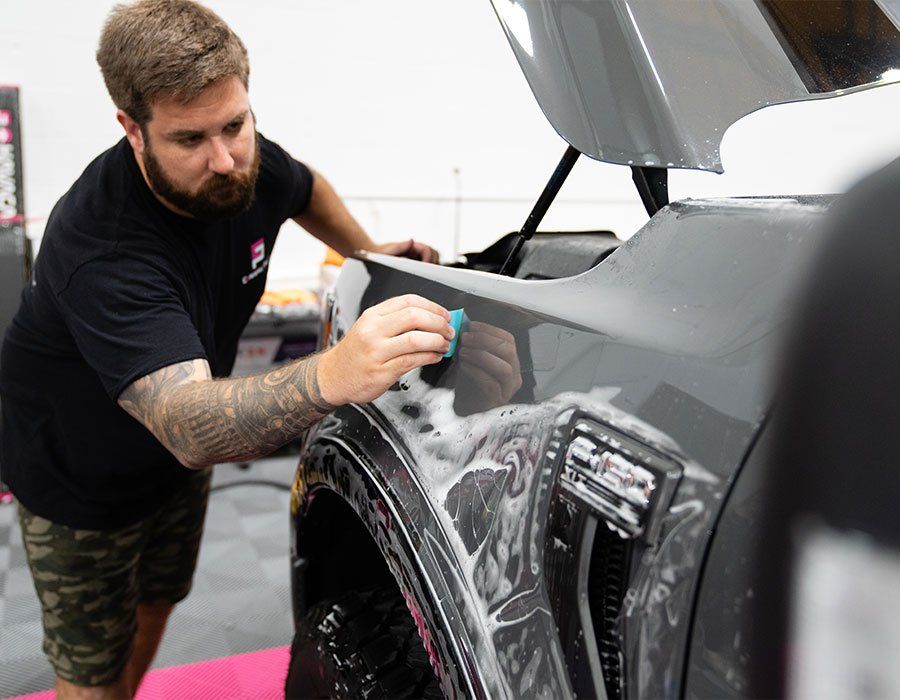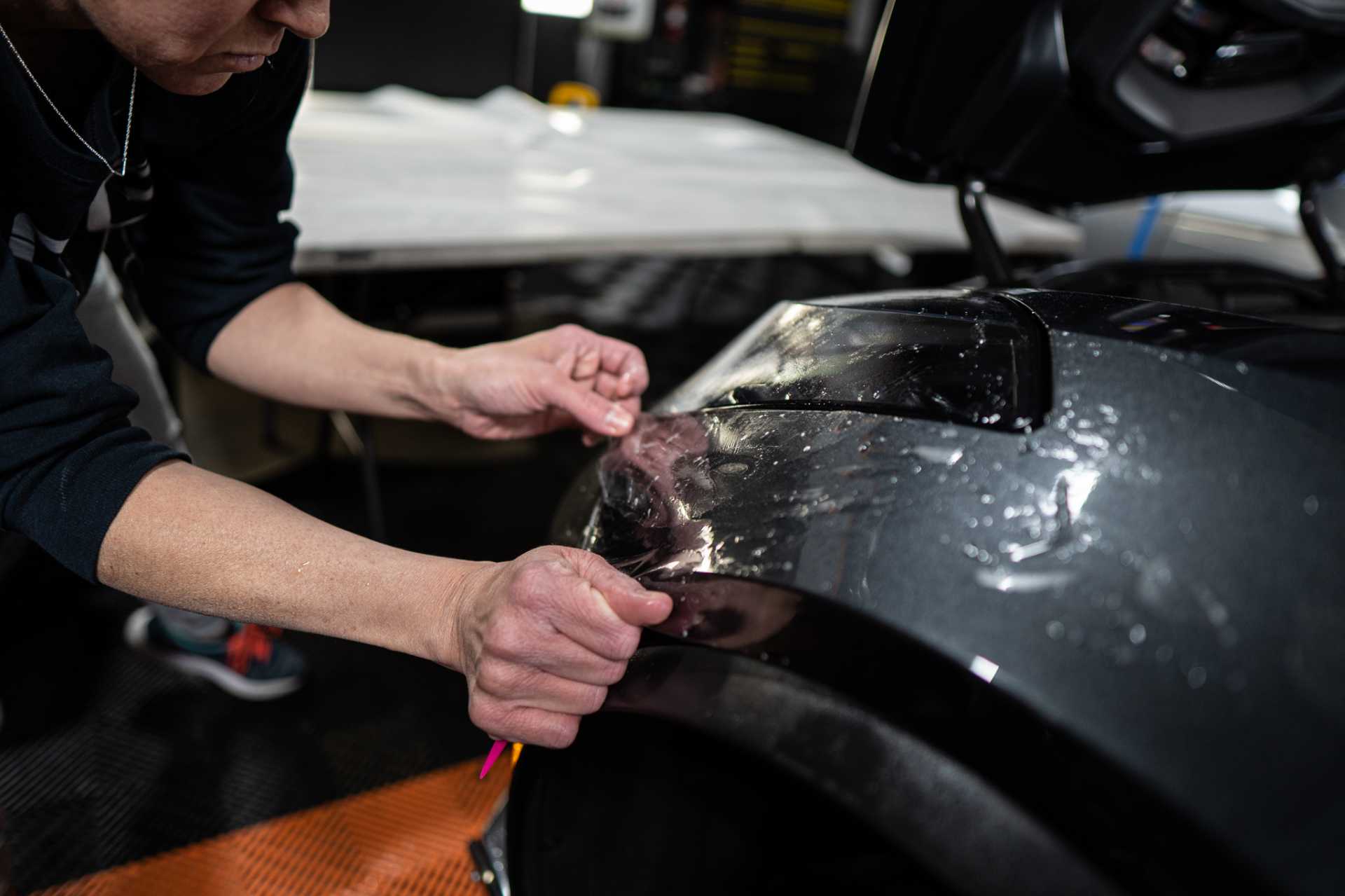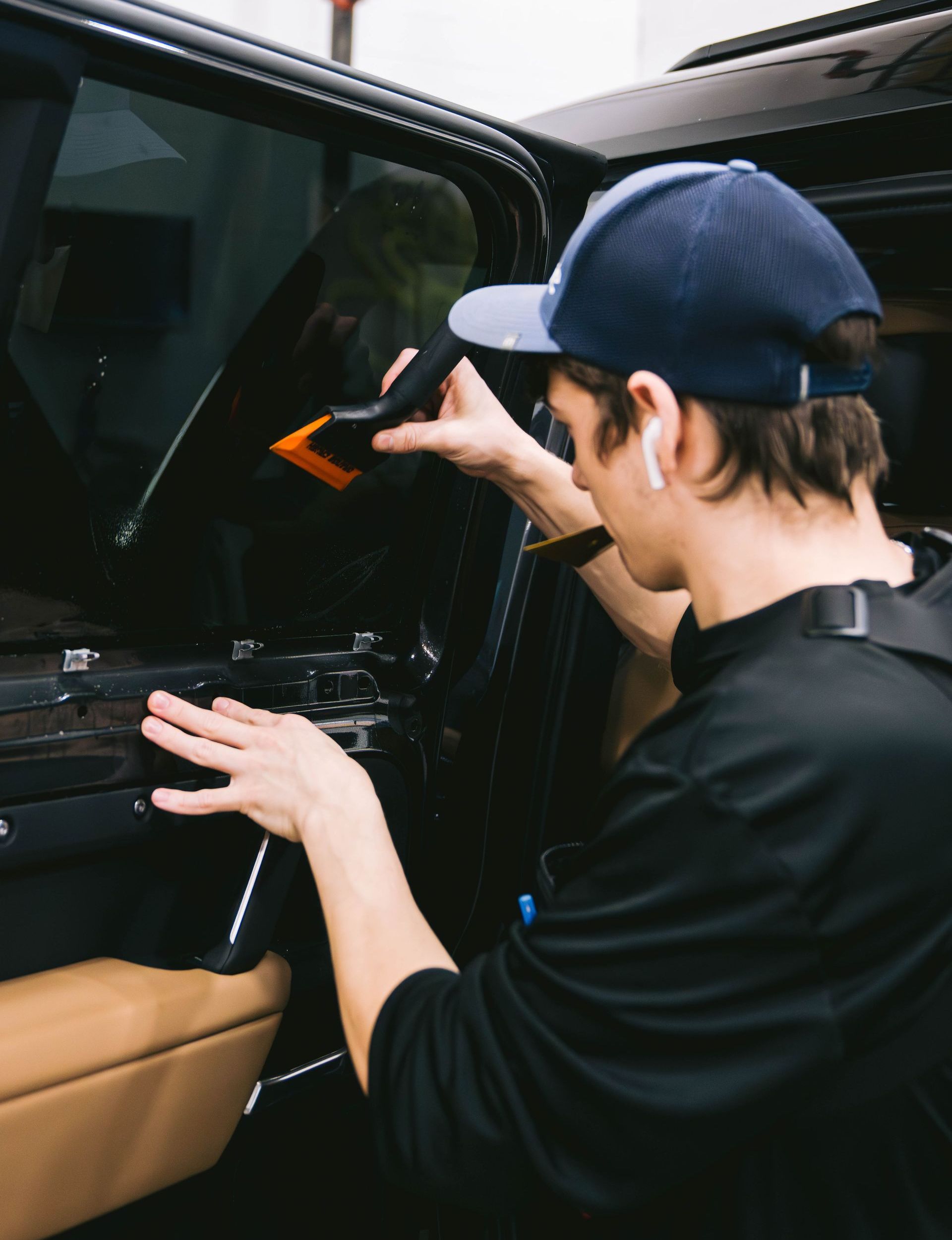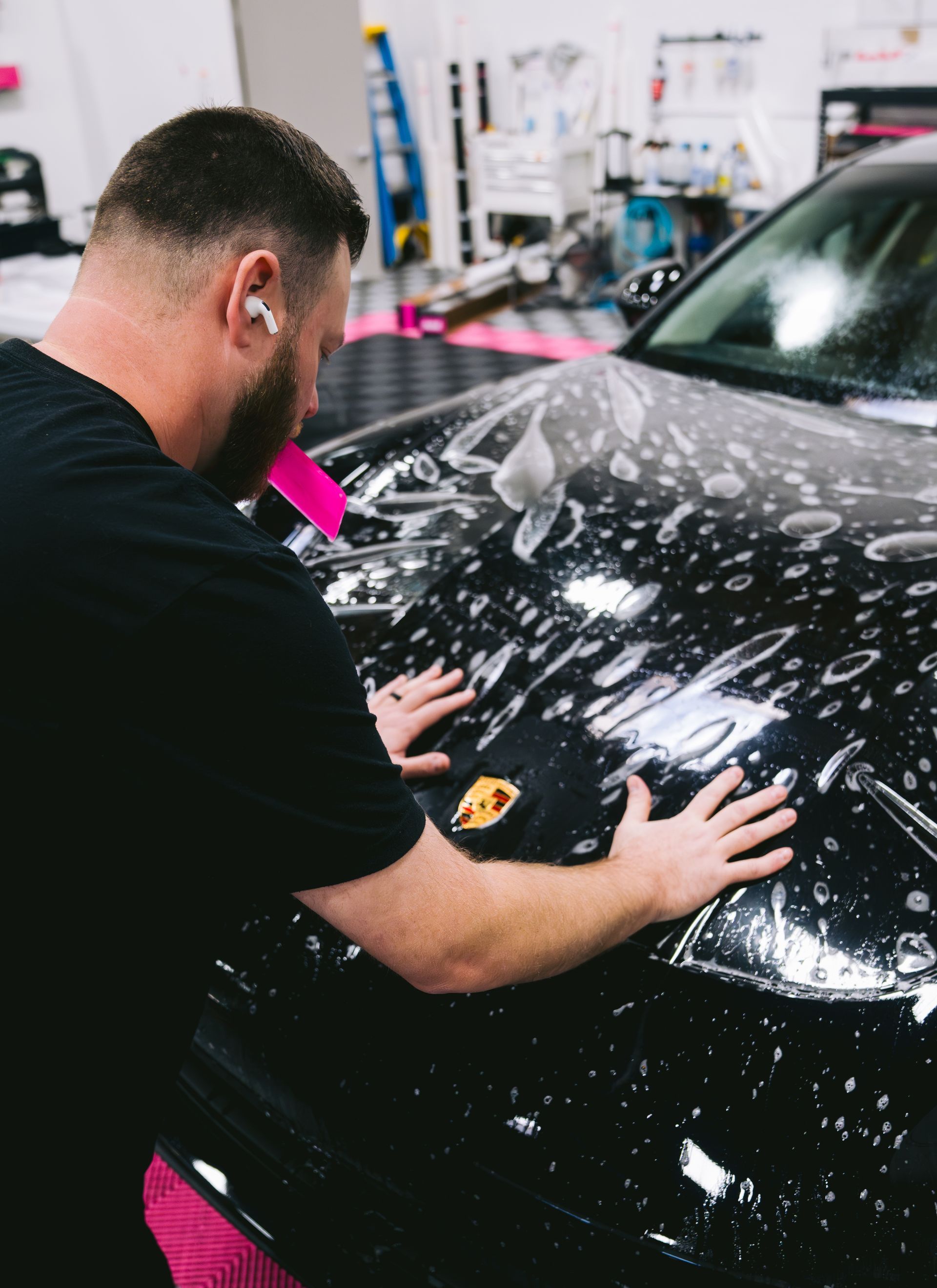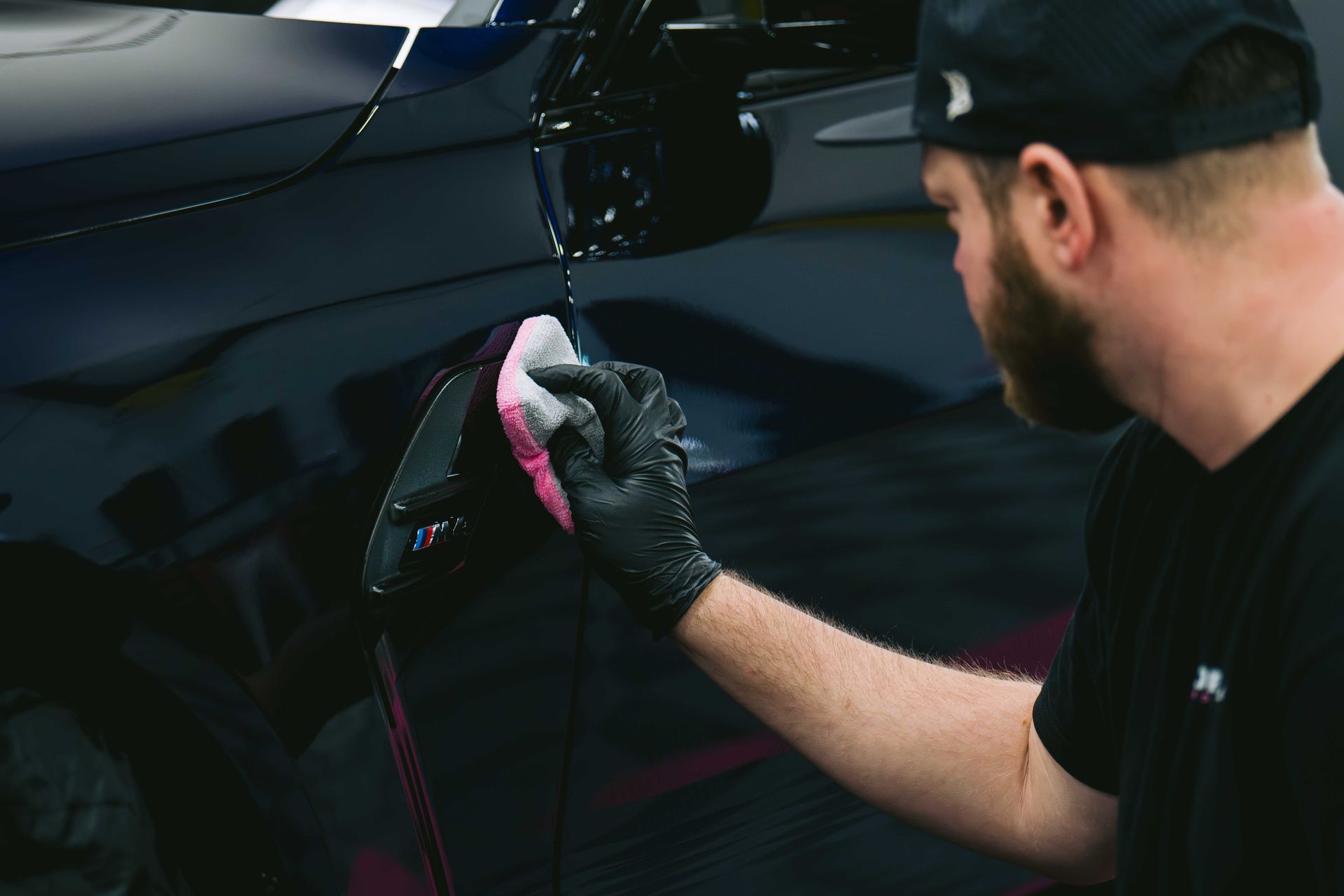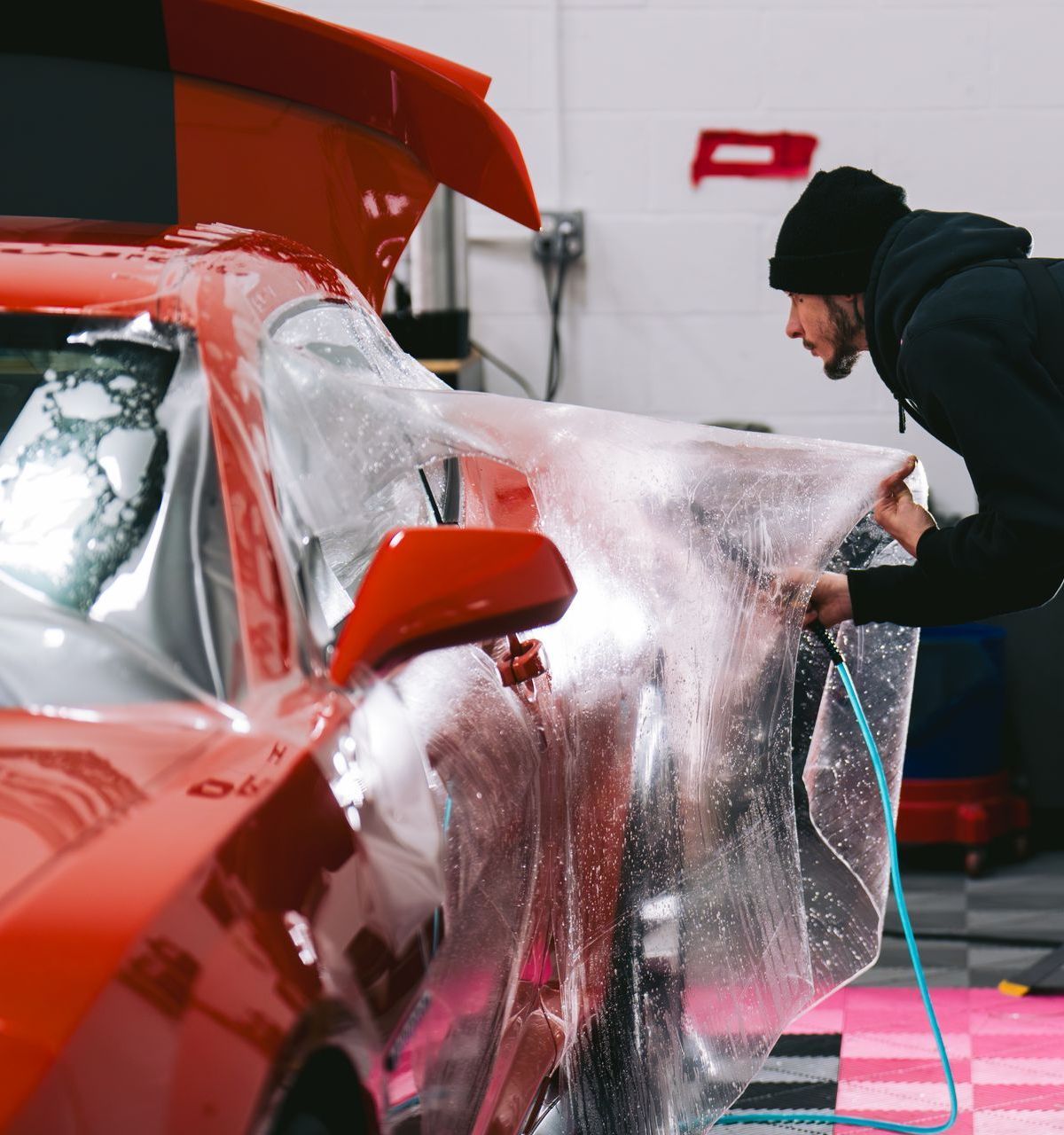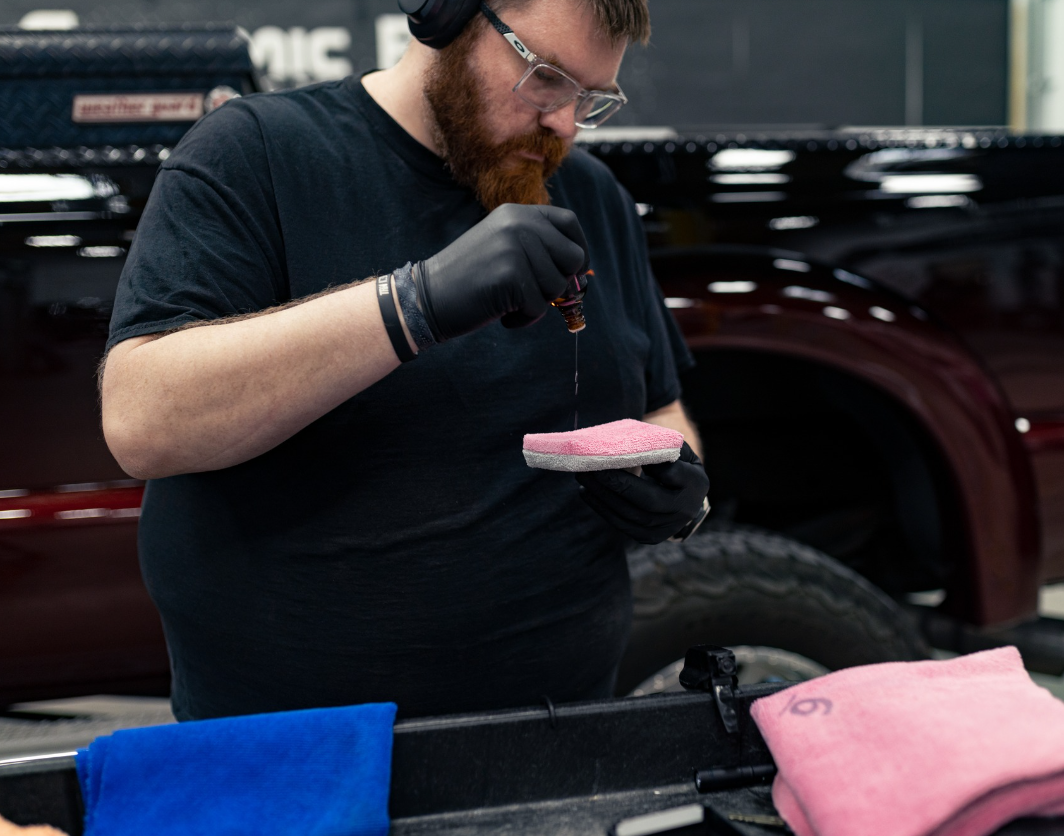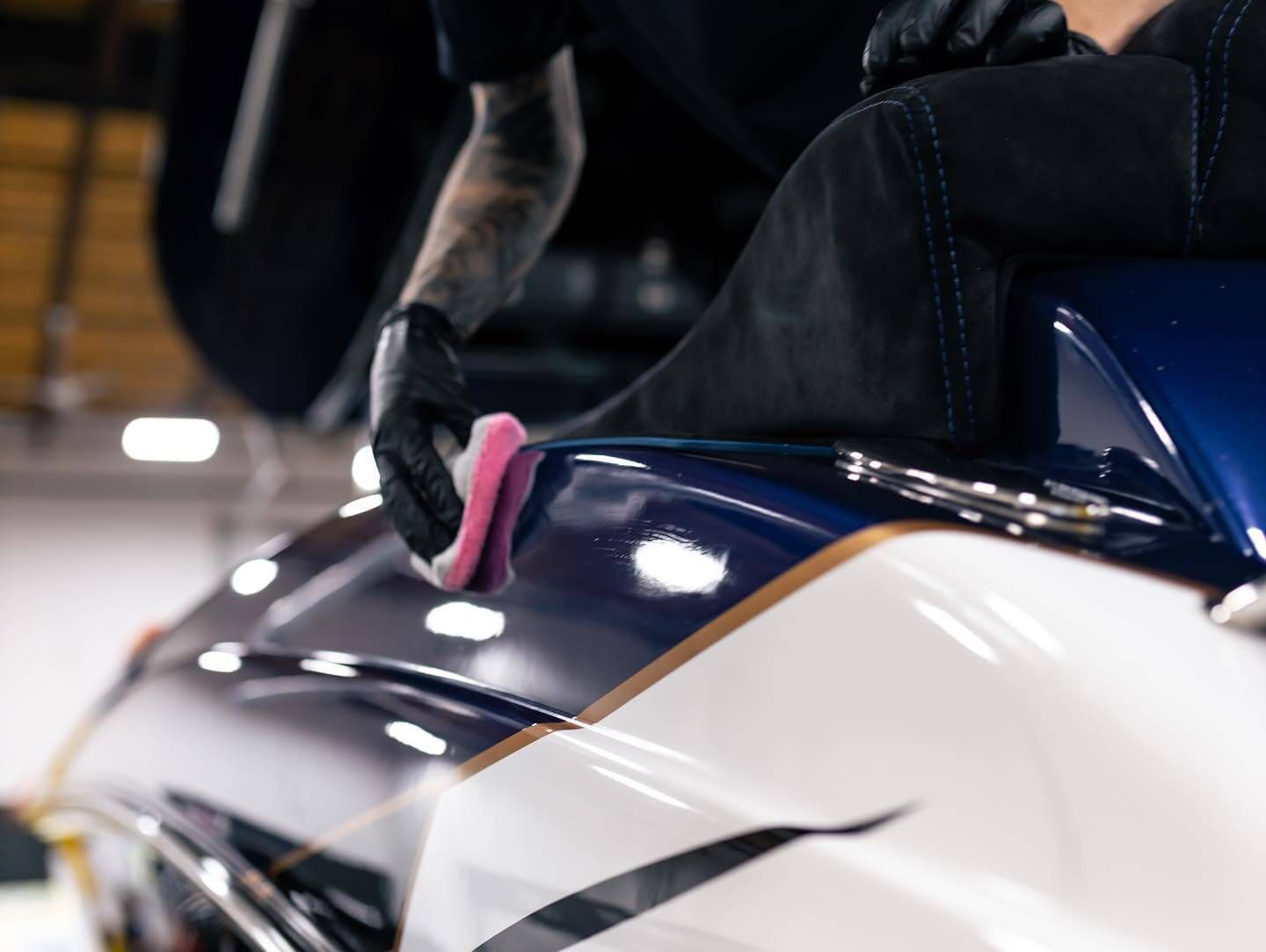The Benefits of PPF: How it Preserves Your Vehicle’s Resale Value
PPF is like a shield for your car's paint. It acts as a self-healing skin that safeguards your vehicle from minor scratches, stone chips, and bug splatters. The unique feature that most don't anticipate is that this protective layer absorbs damage, leaving the original paint untouched. This ensures your car maintains its shine, keeping it looking fresh off the lot even with time and use. Clever, right? Now, keep in mind what a bright and scratch-free car might mean when you decide to sell.
Applying PPF to your vehicle can safeguard its exterior from scratches, stone chips, and other minor abrasions, thereby preserving its pristine condition and enhancing its resale value. By protecting the paint finish, PPF helps retain the car's aesthetic appeal, potentially leading to a higher resale price when you decide to sell or trade it in.
What is PPF and How Does it Work?
Imagine a nearly invisible suit of armor for your car that shields it from the dangers of the road—this is the role of Paint Protection Film, or PPF. This transparent protective layer is crafted from thermoplastic urethane, acting as a barricade between your vehicle’s paint and common hazards like stone chips, bug splatters, and minor abrasions.
PPF has evolved into a highly adaptable and durable solution, allowing it to conform seamlessly to the curves and contours of your vehicle. Its ability to absorb damage is owed to its sacrificial nature, effectively shielding your car's original paint from harm. Derived from its military origins, where it was used to protect helicopter rotor blades during times of conflict, PPF has integrated itself into the automotive realm as a steadfast guardian for vehicles.
When you think about PPF working as a shield for your car, consider it like this: just as a knight would defend themselves from enemy blows with armor, your car relies on PPF to provide that vital layer of protection against everyday hazards.
Take for instance, when you're driving on the highway. Your car encounters little chips and tiny bits of gravel propelled at high speeds by other vehicles.
Without PPF, these could cause noticeable dings on your car's surface. But when carefully shielded by PPF, these damages are significantly lessened, preserving your car's pristine appearance.
Key Characteristics of PPF
PPF offers an array of essential features that make it a standout choice for preserving the appearance and integrity of your vehicle. Let's explore these crucial attributes to appreciate the full scope of benefits that PPF provides.
Durability and Flexibility
One of the primary advantages of PPF is its exceptional durability and flexibility. This protective film is highly conformable, meaning it can easily adapt to the contours of your vehicle's surface without compromising its structural integrity. This makes it suitable for application on various areas such as the hood, fenders, front bumper, side view mirrors, rocker panels, lower doors, and rear guards.
Moreover, PPF is available in various thicknesses, allowing you to choose the level of protection that aligns with your specific needs. Whether you're seeking standard protection from daily wear and tear or enhanced coverage for high-impact areas, the versatility of PPF ensures that your vehicle receives tailored defense against environmental hazards. Notably, this adaptability allows PPF to safeguard your car from stone chips, bug splatters, minor abrasions, and other forms of damage while maintaining a visually appealing aesthetic.
Self-Healing Properties
Innovative advancements in PPF technology have introduced self-healing properties to certain products. These formulations feature a self-healing top coat capable of reforming itself after sustaining scuffs or scratches. As a result, the film maintains a smooth and clean appearance, effectively minimizing the visible impact of superficial damage.
Imagine driving worry-free about those small nicks and scratches that seem inevitable with regular use. The self-healing capabilities of PPF not only alleviate concerns about minor blemishes but also contribute to maintaining the pristine look of your vehicle over time. With this advanced feature, you can rest assured knowing that your car's paint stays protected, allowing you to fully enjoy the experience of owning and driving your vehicle without unnecessary worry about its appearance.
Studies indicate that vehicles equipped with PPF exhibit significantly reduced paint damage—up to 40–50% less than their unprotected counterparts—highlighting the remarkable effectiveness of this technology in preserving the overall appearance and value of automobiles.
The combination of durability, flexibility, and self-healing properties solidifies PPF as an invaluable asset in safeguarding your vehicle's resale value while ensuring long-lasting protection against external elements and routine wear. With these key characteristics, PPF emerges as a reliable solution for maintaining the pristine condition and market value of your cherished vehicle.
The Advantages of PPF
The decision to invest in paint protection film (PPF) goes beyond merely safeguarding your vehicle from scratches and rock chips; it's about securing the long-term value of your car. By doing so, you are ensuring that both the exterior and resale value of your vehicle remain in top-notch condition. Let's explore the specific advantages that accompany opting for PPF.
Preserving Resale Value
One of the standout benefits of PPF is its ability to protect the exterior paint from damage, thereby maintaining the aesthetic appeal of your vehicle, which is crucial for its resale value. Additionally, vehicles equipped with PPF can retain up to 60% more resale value compared to those without it, indicating a significant return on investment in the future.
Long-Term Paint Protection
In addition to preserving resale value, PPF acts as a shield against an array of environmental factors, road debris, and harsh weather conditions. This level of protection minimizes wear and tear on the paintwork over time, allowing your vehicle to maintain its visual appeal and structural integrity for longer periods.
The PPF clear protective layer makes sure that the original paint job is unaltered and unblemished. It withstands the impact of gravel, salt, bugs, and other potential hazards that could gradually erode the paint. Without this barrier in place, these elements can cause irreversible damage, leading to costly repaints or repairs down the line.
With proper application and maintenance, PPF offers a reliable defense against rock chips, scratches, UV exposure, and chemical stains for an extended period. This comprehensive coverage lessens the need for frequent touch-ups and expensive detailing procedures while prolonging the overall lifespan of your vehicle's exterior.
PPF's Role in UV Ray Protection
When we talk about sun damage, it's not just about our skin. Your car's paint job is also at risk from the harmful effects of UV rays. The sunlight breaks down the chemicals in the paint, leading to fading and deterioration over time. That beautiful, vibrant color that you love can start to look dull and worn if it's not properly protected.
Here's where the PPF steps in as a savior. Applying PPF to your vehicle creates a safeguard against these damaging UV rays. It blocks up to 99% of the sun's harmful rays, preventing them from penetrating the film and reaching the paint underneath. This protection extends to not only the color but also the gloss and finish of your car.
In addition, studies have shown that vehicles with PPF installed display significantly less paint damage due to UV exposure than those without PPF. The comprehensive shield that PPF provides acts as a barrier between your vehicle's exterior and the harsh elements, thereby helping to maintain its original color and gloss for a longer period of time.
According to research, PPF can extend the lifespan of a vehicle's paint by up to 5 years because of its exceptional UV protection properties. This makes PPF an invaluable asset when it comes to preserving your car's appeal and ultimately enhancing its resale value.
So, for those who are looking to keep their car looking as close to new as possible, especially to maximize its resale potential in the future, PPF is undeniably a wise investment. Understanding and appreciating PPF's ability to shield your vehicle from the detrimental effects of UV rays helps us recognize its vital role in preserving both the appearance and long-term value of our cars.
How PPF Preserves a Car's Shine
Imagine your car fresh from the showroom—glistening paint that reflects the sun and light and gives that unbeatable eye-catching appeal. However, constant exposure to the elements—sunlight, rain, snow, and even bird droppings—can tarnish its luster. This is where Paint Protection Film (PPF) steps in to ensure that your vehicle’s shine remains vibrant and lustrous for years to come.
First off, PPF acts as a barrier against environmental contaminants like dirt, splattered bugs, and tar. These substances can adhere to your car's paint and cause it to lose its shine over time. Additionally, PPF provides an added layer of protection against small abrasions and light scratches that can dull the surface of the paint.
Additionally, PPF keeps a vehicle's paint from oxidizing as a result of exposure to the elements.
Furthermore, UV rays from the sun can be particularly damaging to a car's paint job. They can cause discoloration and fade over time. PPF has UV inhibitors that counteract this effect, shielding the paint from harmful UV rays and preventing the color from losing its original vibrancy.
In fact, a study by the International Carwash Association found that vehicles with PPF maintained 85% of their original gloss after three years, compared to only 60% for vehicles without PPF. Comparative data from a leading automotive magazine showed that PPF-treated cars retained 95% of their original shine after five years, while non-PPF cars only retained 70%.
So whether you're driving under clear blue skies or getting caught in unpredictable weather conditions, know that PPF has your vehicle’s back—the film creates an invisible shield over your car’s paint, ensuring that it remains as breathtaking as the day you first laid eyes on it. PPF genuinely acts as a devoted protector of your car's glossy exterior by warding off environmental contaminants and preventing UV-induced discoloration.
Correction of Existing Scratches with PPF
It's a universal truth that no matter how hard we try to protect our vehicles, scratches seem to find their way onto the paintwork. But here's where PPF comes to the rescue. PPF has an amazing ability to conceal minor scratches, swirl marks, and light abrasions on the paint surface. This isn't just about hiding those imperfections; it's about providing a solution that seamlessly enhances the overall aesthetic appeal of the vehicle.
Imagine having a few tiny scratches on your car’s hood, making it look a little less than perfect. PPF can reduce the visibility of these scratches by up to 90%. The film itself is designed to have "self-healing" properties, meaning that it has the ability to reform itself after being scuffed or scratched. This ensures that any existing minor abrasions are significantly reduced in appearance, making the paint surface look nearly flawless.
Furthermore, by effectively concealing these imperfections, PPF manages to give your car's exterior a consistently glossy and unblemished appearance. This seamless finish not only adds to the overall aesthetic appeal but also serves as a significant selling point for prospective buyers. When you're ready to sell your vehicle, having a near-perfect exterior can set your car apart from others on the market.
Think about it like this: You're selling your car, and there are two vehicles that are otherwise identical in every way—except one has an almost flawless exterior thanks to PPF. Which do you think would be more appealing to a potential buyer? Most likely, it'll be the one with a sleek finish that hides any minor blemishes.
The use of PPF not only enhances the visual appeal of your vehicle but also helps maintain its value over time. Studies have shown that vehicles with PPF tend to have a higher resale value compared to those without. On average, vehicles with PPF see an increase of 5–10% in resale value. This means that not only does PPF protect and beautify your vehicle, but it can also pay off when it comes time to part ways with it.
Important Considerations for PPF Application
When it comes to safeguarding your vehicle's resale value, the decision to apply Paint Protection Film (PPF) is an investment in maintaining its pristine condition. However, to fully benefit from PPF, there are critical factors to consider, ranging from the quality of installation to ongoing maintenance.
Professional Installation
Professional installation plays a pivotal role in maximizing the protective benefits of PPF. Certified and experienced installers possess the expertise and precision required to ensure seamless coverage of your vehicle's surfaces. Their attention to detail and skillful application not only enhance the overall effectiveness of the film but also contribute to a visually appealing finish that seamlessly integrates with your vehicle's exterior. Through precise fitting and professional execution, the PPF achieves its intended purpose of shielding your vehicle's paint from various environmental hazards, thereby safeguarding its resale value.
Routine Maintenance
For PPF to deliver long-term protection and preserve your vehicle's resale value, diligent routine maintenance is indispensable. Embracing proper maintenance practices, such as regular washing and waxing, serves as a pivotal component in prolonging the life of the film. By routinely washing your vehicle, you effectively remove contaminants and debris that accumulate on the PPF surface, preventing them from degrading its protective properties over time. Additionally, waxing not only enhances the glossy appearance of your vehicle but also reinforces the durability of the PPF, thereby ensuring its longevity and sustained efficacy in safeguarding your car's resale value.
Adhering to consistent maintenance routines will amplify the protective prowess of PPF and fortify your vehicle's resale value for years to come.
Top-notch Paint Protection Film Solutions in Bel Air, MD
When it comes to preserving the beauty of your vehicle's paint job in Bel Air, MD, Detail Solutions stands out as the go-to destination for top-notch paint protection film solutions. With a dedication to precision and a keen eye for detail, our team delivers unparalleled results in safeguarding your car against chips, scratches, and environmental damage. Our high-quality paint protection films provide an invisible shield, ensuring your vehicle maintains its flawless appearance for years to come. Don't compromise on protection—trust Detail Solutions to keep your car looking pristine and showroom-ready. Schedule your appointment today and experience the difference our expertise makes!

